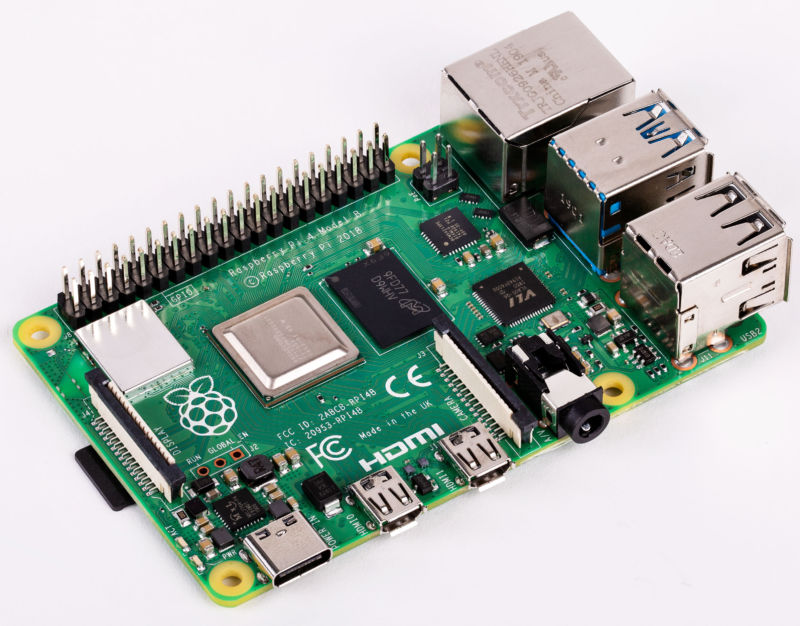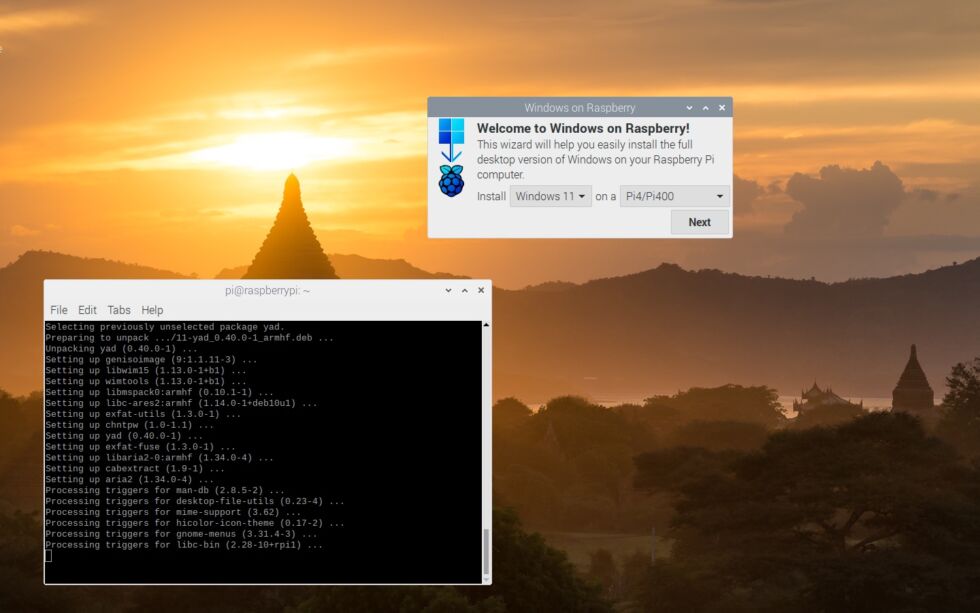New script makes it easy(ish) to put Windows 10 or 11 on a Raspberry Pi

Enlarge / The Raspberry Pi 4. (credit: Raspberry Pi)
Installing the ARM versions of Windows 10 or Windows 11 to a cheap Raspberry Pi board has been possible for a long time but has always required more time and patience than it's worth. But if you're curious, a new script called "WoR-flasher" (that's Windows on Raspberry) simplifies the process. WoR-flasher has a simple UI that can create ARM Windows install media, which can then be booted up on a Raspberry Pi for installation in the same way a USB stick created with Microsoft's tools can install Windows on an x86 PC.
The script's creator argues that it violates no laws or Windows licensing agreements since it downloads all its code directly from Microsoft's servers and installs Windows in an unlicensed, deactivated state, just as it would install on a regular x86 PC without a product key. Microsoft only sells licenses of the ARM versions of Windows to OEMs. WoR-flasher has officially been tested using the 32-bit version of the Raspberry Pi OS (and that's what I used to create some install media, too), but it should run without issue on any Debian-based Linux distributions.
-

You run two terminal commands to download and run the WoR-flasher script (which also installs a few dependencies). The simple UI takes you the rest of the way. [credit: Andrew Cunningham ]
The only Pi models you should even consider installing Windows on are the higher-end versions of the Pi 4 with 4GB or 8GB of RAM (with a quick workaround to allow Windows to see more than 3GB of RAM). And with those boards, even with a fast microSD card and a processor overclock, Windows 11 isn't going to feel fast enough to use as your day-to-day OS. But this tool does give developers and enthusiasts an affordable way to test ARM Windows apps. Windows 11 is introducing a new ABI called "ARM64EC" that's designed to simplify the process of porting x86 Windows apps to ARM by allowing developers to ship apps that use a mix of ARM and x86_64 code. Windows will use its built-in x86_64 emulation for any x86_64 code (with the attendant performance penalty), while the ARM code can run natively at full speed.
Read on Ars Technica | Comments
source https://arstechnica.com/?p=1791560